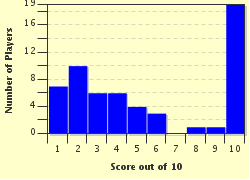Quiz Answer Key and Fun Facts
1. The Moon Festival is celebrated on the 15th day of the 8th lunar month. It is also known as the Mid-Autumn Festival. What is the Chinese name for this festival?
2. The magical full moon constitutes the very soul of the festival. According to legend, what is the "Old Man on the Moon" (Yue-lao) the god of?
3. A great poet of the Tang Dynasty wrote beautiful poetry extolling the moon. A wine lover, he was reputed to have fallen from a boat and drowned while trying to embrace the moon's reflection in the water. Who was this poet?
4. The Moon Festival, of course, is celebrated by eating moon cakes. Traditonally what is used as filling for the cakes?
5. According to Chinese sources, mooncakes were first mentioned in connection with the Moon Festival when China came under the rule of these people in the Yuan Dynasty. Who were these people?
6. Many fruits are eaten during the festival. One special fruit is eaten as well as given as gifts as a symbol of prosperity. Which native fruit is that?
7. On the evening before the celebration, families would prepare plates filled with round fruits - pomegranates, oranges, peaches, grapes etc. The round shapes symbolize not only the full moon but also the unity of the family. In some areas, though, a certain fruit is excluded. Which fruit is this?
8. As homage to the moon, the ancient Chinese beat drums to save the object of their worship during the dreaded lunar eclipse. Why do they beat drums?
9. Young chinese maidens pray to Chang-E, the moon goddess, to endow them with beauty. She was the beautiful wife of the great archer Hou Yi. What animal kept her company on the moon?
10. During the Moon Festival, children are delighted to stay up late and parade the streets with lanterns as families take to the streets to moon-gaze. The lanterns vary by color, shape, form, size, material and complexity. The most complex form involves revolving panels that turn when lit. What is this type of lantern called?
Source: Author
Ellabear
This quiz was reviewed by FunTrivia editor
Bruyere before going online.
Any errors found in FunTrivia content are routinely corrected through our feedback system.

